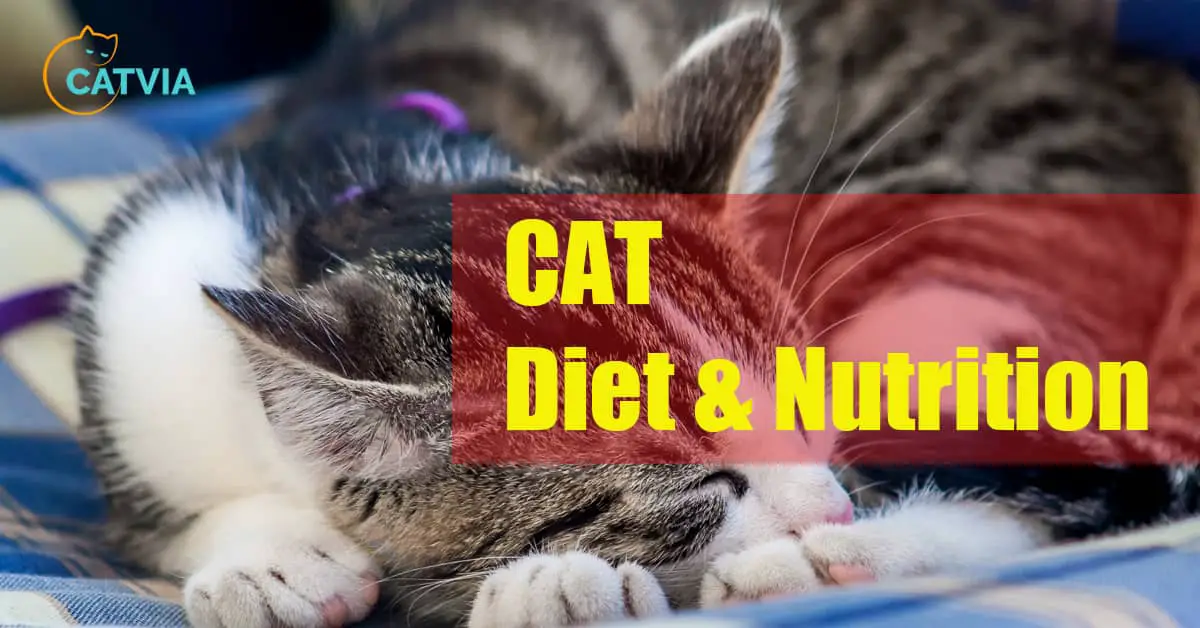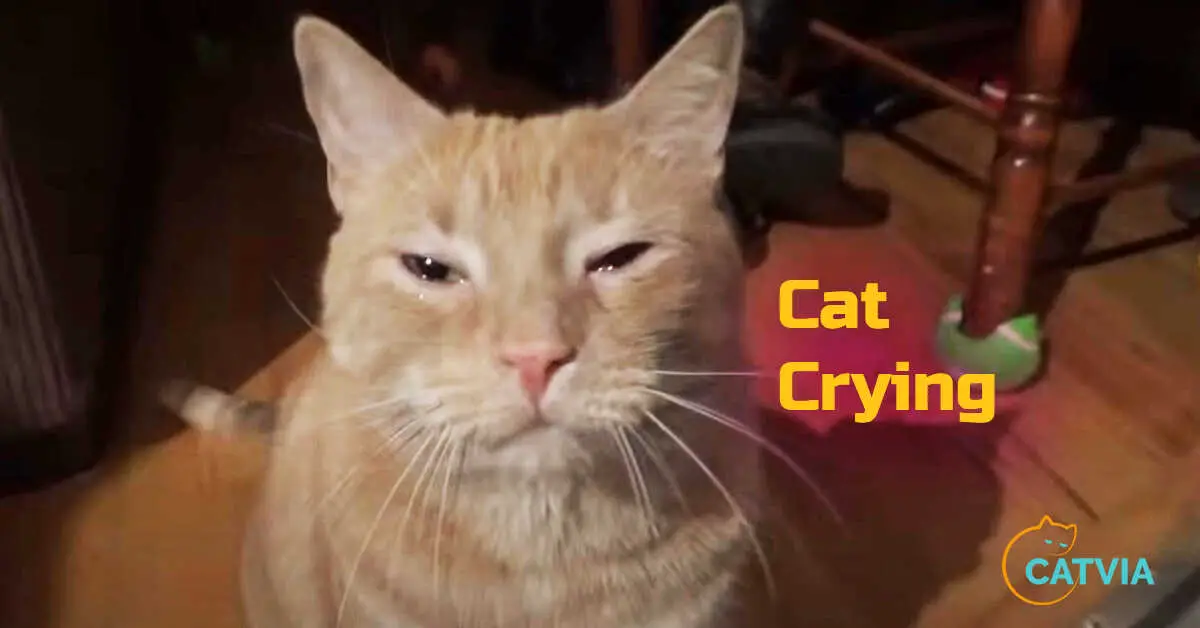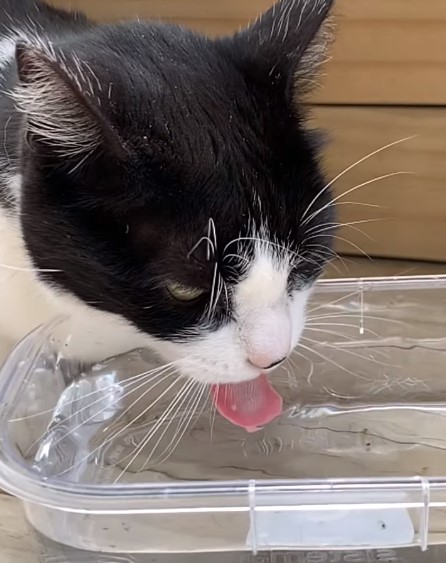As a pet parent, you want your cat to lead a happy, healthy, long, and active life. One of the best ways to do this is by ensuring that your furry friend’s diet has the appropriate balance of the nutrient groups namely fats and oils, protein, vitamins, carbohydrates, and minerals.
Cats are carnivorous animals. This means that their diet should contain meat. Unlike other pets, they can’t be turned into vegetarians. Cats rely heavily on protein as their source of energy.
Research studies have shown that cats require high protein than dogs in their diet. Meat isn’t only a decent source of protein. It provides essential nutrients such as taurine, vitamin A and arachidonic acid which promote vision, heart, coat, and skin health.
In this article, we are going to discuss the best diets for cats and share with you simple nutrition tips that you can use to promote the health of your cat. Keep reading to find out more.
Healthy Cats Guide: Diet and Nutrition Tips
To keep your furry friend healthy and fit, you need to ensure that his diet is well-balanced with all the essential nutrients.
High-quality cat food should be formulated carefully to provide them with all the necessary nutrients that they need to survive and thrive. To ensure that you are feeding your cat well, focus on giving them the following:
1. Access to clean drinking water
Water is important to every living creature on the planet including your cat. While cats have adapted to living in semi-arid or arid areas, lack of enough water can lead to cystitis and bladder problems. Ensure that your cat can access fresh, clean drinking water all the time.
If you’ve lived with your cat for a long time, you’ve probably noticed how he loves drinking water from weird sources such as shower trays, and dripping taps to name a few. However, this doesn’t mean that you should stop providing him with clean and fresh water.
You should place their water bowl a few meters from their feeding bowl and their litter tray. If you see your cat drinking water from weird places all of a sudden, you need to contact your vet because they might have a medical condition that is causing excess thirst.
2. Proteins and amino acids
Cats use amino acids from their protein diet as their biggest source of energy. Since their bodies can’t provide these chemical building blocks, they have to rely on diets with specific amino acids.
Feeding your cat, a balanced and complete diet will provide them with all the essential amino acids that they need to form and strengthen their skin, muscle, and far.
Apart from, that, amino acids boost the immune system of your cat. Lack of enough protein in their diet can lead to weakened muscles, stunted growth, a high risk of infection, and poor coat condition.
3. Fatty acids
Fatty acids are small units of fat that provide energy to your cat to keep him active and provide insulation and protection to important organs in their body.
Essential fatty acids like omega 6 and omega 3 play an important role in keeping your cat’s coat and skin healthy. Without fatty acids, your cat will have poor coat and skin conditions.
4. Carbs and prebiotics
While starch and fiber are not essential in the diet of your cat, they play an important role in providing energy. Prebiotics help in maintaining gut health by promoting the growth of good bacteria. Insoluble fibers promote intestinal health and excellent stool quality.
5. Minerals
Minerals such as phosphorous and calcium play an important role in promoting healthy, strong bones and teeth. Your cat needs the right balance and quantities of each especially if they are feeding kittens or are pregnant.
Magnesium, sodium, potassium, and chloride together with iron, zinc, and copper play an important role in the diet of your cat. Feeding your cat quality foods will provide them with the right mineral balance.
You need to keep in mind that balance is critical. Feeding your cat too much minerals can lead to serious health issues.
6. Vitamins
Cats need vitamins in small amounts to promote normal vision, growth, healthy skin, a healthy nervous system, and wound healing. They also help in metabolizing proteins, fats, and carbs. Vitamin C and vitamin E are also fantastic antioxidants.
Soluble vitamins such as A, D, and K are usually stored in the fatty tissues while soluble vitamins such as B and C are passed out in their urine.
7. Feeding your cat wet or moist food
Wet or moist foods usually come in cans, pouches, or trays. When feeding your cat wet or moist food, you should always serve at room temperature to ensure that your cat enjoys the smells and textures.
After opening, always cover the remaining portion and store them in your fridge for less than 24 hours. Keep in mind that the food should at room temperature during the next feeding session.
Therefore, take it out of the fridge a few hours before serving time. You should never let wet food sit around uneaten for an hour or more because it can become unappetizing and attract harmful bacteria that will result in stomach upsets.
8. Dry foods for your cat
Dry foods are among the best diets for your cat. They usually contain the right balance of minerals and nutrients. Plus, they have a crunchy texture that promotes teeth health. They also contain more nutrients than wet food. Therefore, you’ll only need to serve small amounts.
Whether you decide to feed your cat dry or wet food, it’s always important to check the label to ensure that it’s complete and not complementary. Otherwise, you’ll end up buying a treat or snack instead of a well-balanced meal.
9. Don’t feed your cat dog food
While cat and dog food might look like the same thing, you should avoid feeding your cat dog food. The needs of your cat are different from that of a dog. Therefore, cat food is not suitable for dogs and vice versa.
By the way, picking the right breed is very important when choosing a pet like cat or dog. Click here to choose a puppy in the safest way.
10. Changing your cat’s food
If you choose to change your cat’s food to a different brand or type, you need to introduce the new food gradually for seven to ten days. It’s always best to place two bowls – one with new food and the other one with old food so that your furry friend can get the chance to test both.
11. Homemade food for your cat
Preparing homemade food for your cat can be fun. However, it is not recommended by experts. It’s hard to provide the best diet for your cat at home because some foods have very low or high quantities of essential minerals. Raw meat contains bacteria and parasites like Salmonella which can make your cat sick.
Therefore, as a pet parent, you need to maintain high hygiene if you choose to feed your cat a raw diet. You also need to be careful about bones as they can injure your cat’s intestines.
12. Does your cat need supplements?
Healthy cats that are fed balanced diets regularly do not require supplements. In fact, adding supplements can lead to an imbalance in their nutrition and cause serious health problems.
That said, cats require special nutritional requirements for certain medical conditions, to boost growth or support pregnancy. Most cat food diets are formulated to meet all these needs. When you are in doubt, always consult your vet.
13. How much should you feed your cat?
Have you been wondering how much you should feed your cat every day? Some of the factors that you should consider to determine the ideal amount to feed your cat include their activity, breed, and lifestyle.
Follow this article how much food does a cat need. Keep in mind that these are just guidelines and that the actual amount varies depending on the activity level or size of your cat. Giving your furry friend treats is good.
However, you need to do it in moderation. If you give them treats, you should reduce the number of their main meals to avoid overfeeding. The calories from treats should never exceed ten percent.
Conclusion
These are the expert diet and nutrition tips that cat owners need to use to promote the health and wellbeing of their cats. What are you going to start doing today to promote your cat’s wellbeing?
Writer Eun Rockwell: Eun Rockwell is a blogger and essay writer from the UK. She likes trying new subjects and is always focused on proving her worth as a writer in new and challenging writing areas. Her hobbies are reading books and traveling. You can reach her via Twitter @rockwell_eun_
His professional interests include humane education, ethics, small animal behavior, and veterinary. As a pet lover from school life, having grown up with two cats and a dog. If he isn’t spending time with his friends and family, Justin enjoys traveling. Learn more about Justin here.



